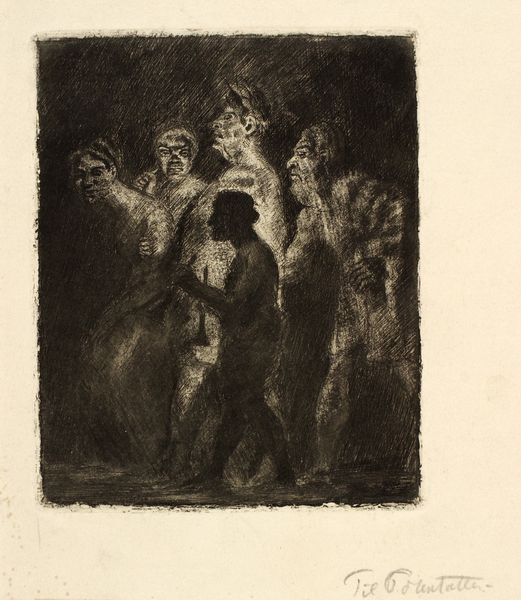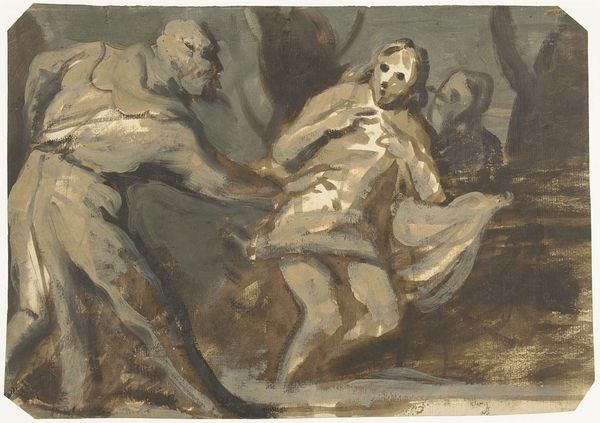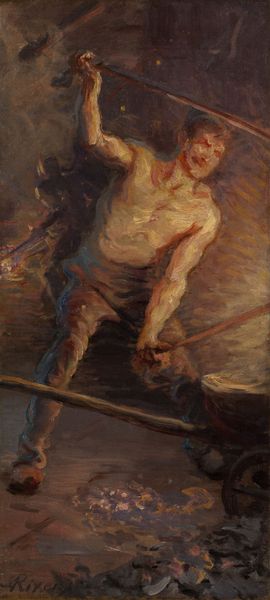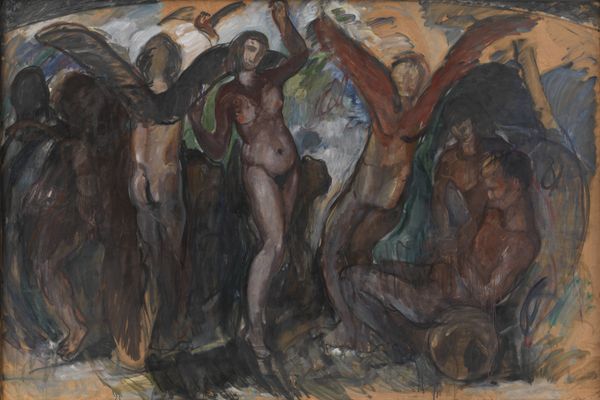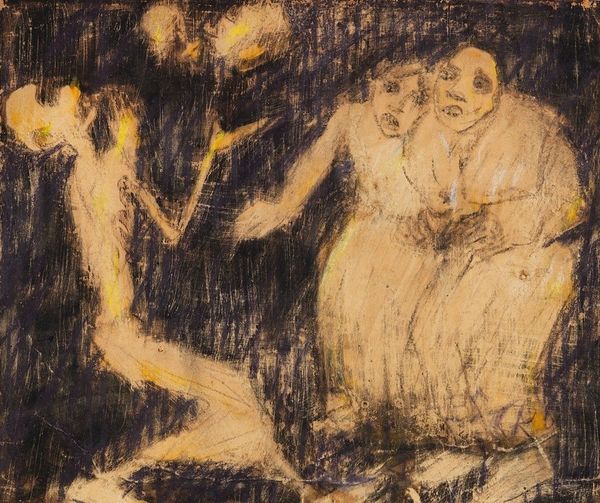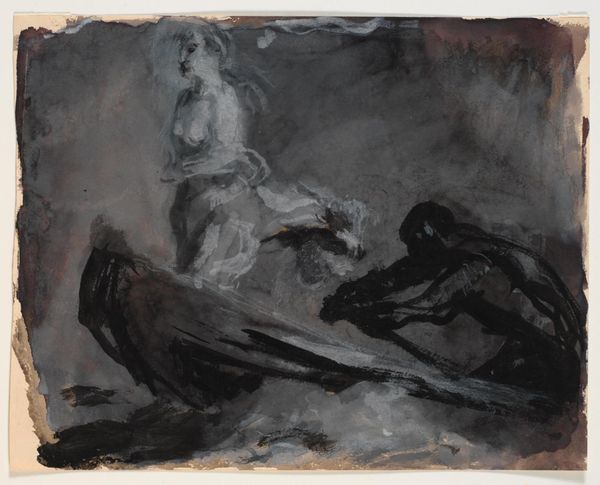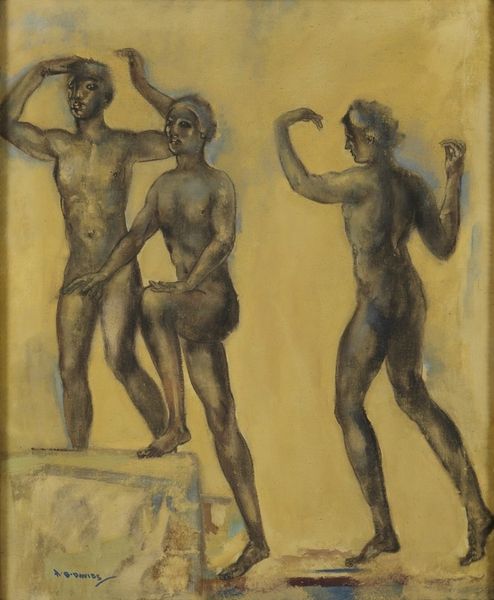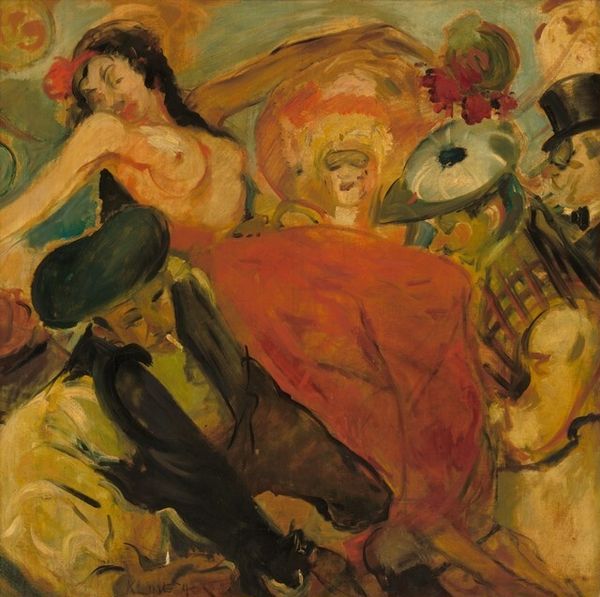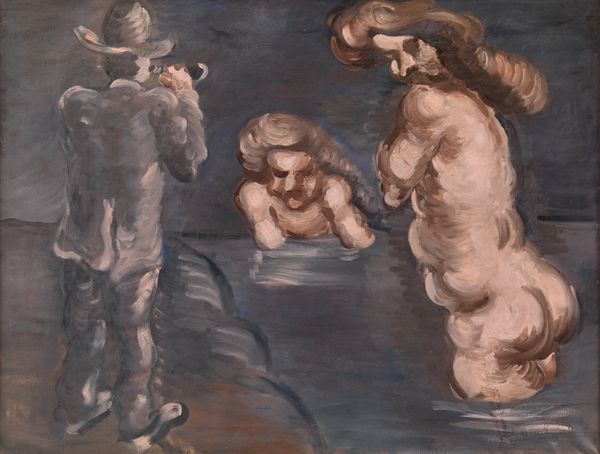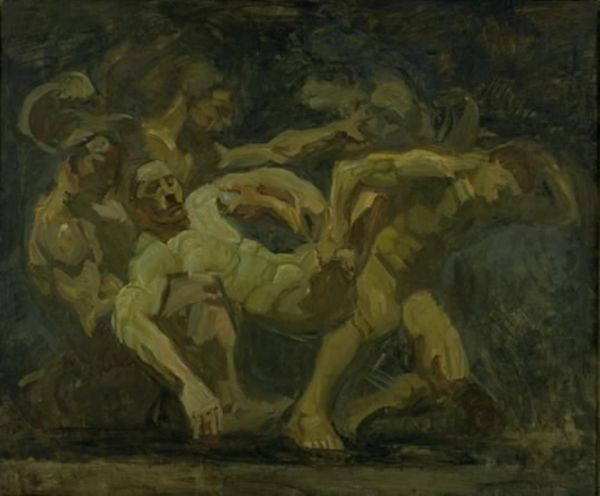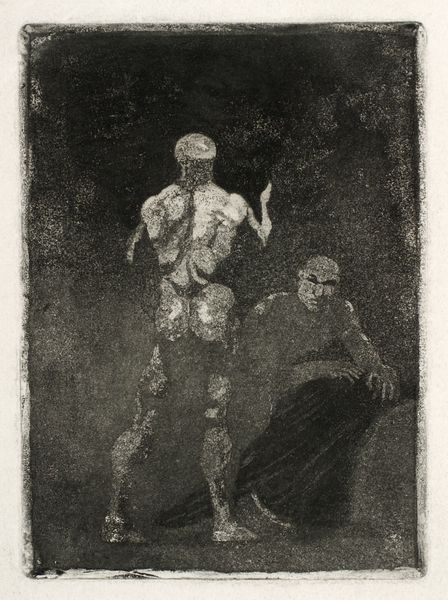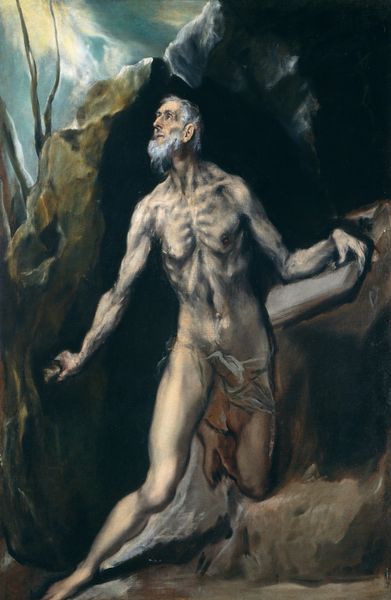
Dimensions: 119 cm (height) x 116 cm (width) (Netto)
Editor: Here we have Oluf Hartmann’s “Susanna,” painted around 1909 or 1910, rendered in oil on canvas with an impasto technique. It strikes me as a very emotionally charged, raw depiction, especially in the way the figures are arranged. How do you interpret this work? Curator: It's a powerful piece, isn't it? I see a layered commentary on the vulnerability of the female nude, especially within a patriarchal framework. The title immediately directs us to the biblical story of Susanna and the Elders. Editor: Yes, I recognize that biblical reference. Curator: But Hartmann's treatment deviates. He’s using the symbolic language of Post-Impressionism to really probe the power dynamics inherent in that narrative. Who holds the gaze, and what does it signify? The impasto creates a sense of urgency, almost as if we're witnessing the scene unfolding in real-time. Where does that put the viewer? Editor: That's interesting… it makes me think about who has agency in this scene. The dark, almost claustrophobic atmosphere adds to the tension. Curator: Exactly. And it raises important questions about the male gaze and the historical objectification of women. Are the women victims? Are the men monsters? Or is Hartmann showing us the psychological state of both actors within oppressive systems of power and value? Editor: That perspective really broadens my understanding of the work. It is not just about that specific biblical story, it touches on wider social issues. Curator: Absolutely. It's about engaging with the complex intersections of gender, power, and representation, forcing us to confront uncomfortable truths about the construction of female identity in art. Hopefully, we are now seeing ourselves confronting it rather than continuing those trends. Editor: Thank you. Now I see new connections in the painting and new layers to analyze.
Comments
No comments
Be the first to comment and join the conversation on the ultimate creative platform.
